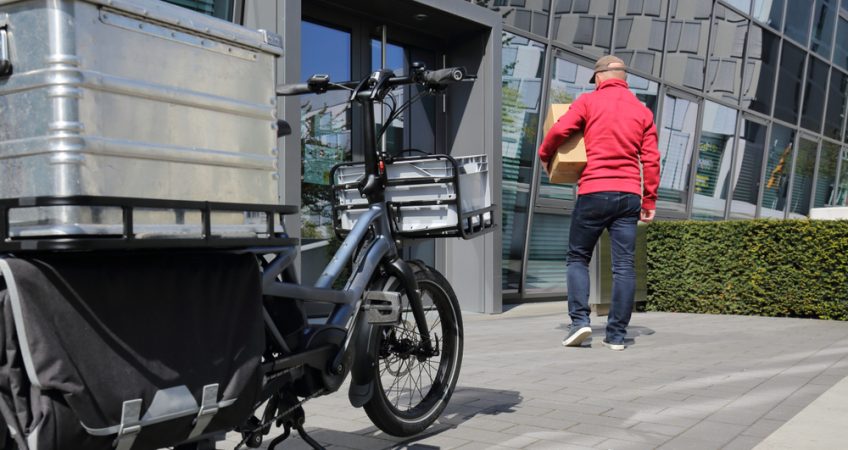
Cover Photo: Black Salmon / Shutterstock
The logistics industry is a critical component of the global economy, with last-mile delivery services playing a vital role in ensuring goods reach their destination in a timely and efficient manner. However, the logistics industry can vary significantly between different countries, with differences in infrastructure, regulations, cultural norms, and consumer behavior all impacting the way deliveries are made. Today let’s examine the differences in the logistics industry, particularly last-mile delivery services, in the US, China, Japan, and Europe. We will also analyze the factors influencing these differences and how companies can navigate them to do business in these countries or regions.
US
The last mile delivery service in the US is highly developed, with a wide range of options available to consumers. Companies like Amazon have established large networks of distribution centers and warehouses across the country, enabling them to offer same-day and two-day delivery options to many customers. The US also has a highly developed road network, making it easier and faster to deliver goods across long distances. However, the US logistics industry faces significant challenges, including a shortage of truck drivers, rising transportation costs, and an aging infrastructure.
China
In China, last mile delivery services have grown rapidly in recent years, fueled by the country’s e-commerce boom. Companies like Alibaba and JD.com have established large logistics networks, using technology such as artificial intelligence and robotics to improve efficiency and reduce costs. Delivery times in China are often faster than in other countries, with some companies offering same-day or even one-hour delivery options. However, the logistics industry in China also faces challenges, including traffic congestion, limited infrastructure in rural areas, and the need to navigate complex regulations.
Europe
In Europe, the last mile delivery service is highly fragmented, with a wide range of companies offering different services in different countries. Many companies in Europe focus on sustainable delivery options, such as bike and electric vehicle delivery, and offer flexible delivery options to customers. However, the logistics industry in Europe also faces challenges, including complex regulations, limited infrastructure in some areas, and the need to navigate different languages and cultural norms across different countries.
Japan
The last mile delivery service in Japan is characterized by a focus on quality and reliability. Delivery times are typically slower than in the US or China, but companies prioritize accuracy and customer service. Many logistics companies in Japan have established partnerships with local convenience stores, enabling customers to pick up packages at their convenience. The logistics industry in Japan also faces challenges, including an aging population, labor shortages, and a need to expand services to rural areas. Another major challenge for logistics companies in Japan is the new regulation to be implemented in 2024, the so-called “2024 issue” or “2024 problem,” which aims to limit truck drivers’ annual overtime work to 960 hours. In addition, no more than 100 hours of overtime will be allowed in a single month, and an average of more than 80 hours per month over a period of 2–6 months will be prohibited. Private sector logistics experts estimate that as early as 2024, when the new regulations take effect, there will be a 14% shortfall in trucking capacity compared to fiscal 2019.
As a logistics company based in Japan, we see this as an opportunity rather than a challenge. Smart Vision Logistics could likely consider a few strategies to emerge as a winner in this new environment. Here are some possible strategies:
- Increasing Efficiency:
Invest in new technologies and processes that can help streamline operations, reduce the need for overtime, and improve overall productivity. - Workforce Planning:
Hire additional workers to compensate for the reduction in overtime hours and implement new scheduling systems to ensure that workers are utilized effectively. We might also invest in training and development programs to help workers adapt to the new regulations. - Diversification:
By expanding into new markets or providing new services, so that reduce the reliance on the traditional logistics model, which may be more heavily impacted by the new regulations. - Collaboration:
Collaborate with other companies or industry players to share resources and reduce costs. By working together, companies can leverage each other’s strengths and expertise to create more efficient and cost-effective logistics networks.
Several factors influence the differences in last mile delivery service between these countries. Infrastructure, including road networks and transportation systems, plays a significant role, as does regulation and government policy. Cultural norms and consumer behavior also impact the logistics industry, with differences in shopping habits and delivery preferences shaping the market. Finally, technology is a significant driver of change in the logistics industry, with companies leveraging new innovations to improve efficiency and reduce costs.
The logistics industry, particularly last mile delivery services, varies significantly between different countries, with differences in infrastructure, regulation, cultural norms, and consumer behavior all impacting the way deliveries are made. Understanding these differences is essential for companies that want to do business in these countries or regions, enabling them to tailor their logistics operations to meet the needs of local customers. As the logistics industry continues to evolve, companies that can navigate these differences effectively will be well-positioned to succeed in the global marketplace.

